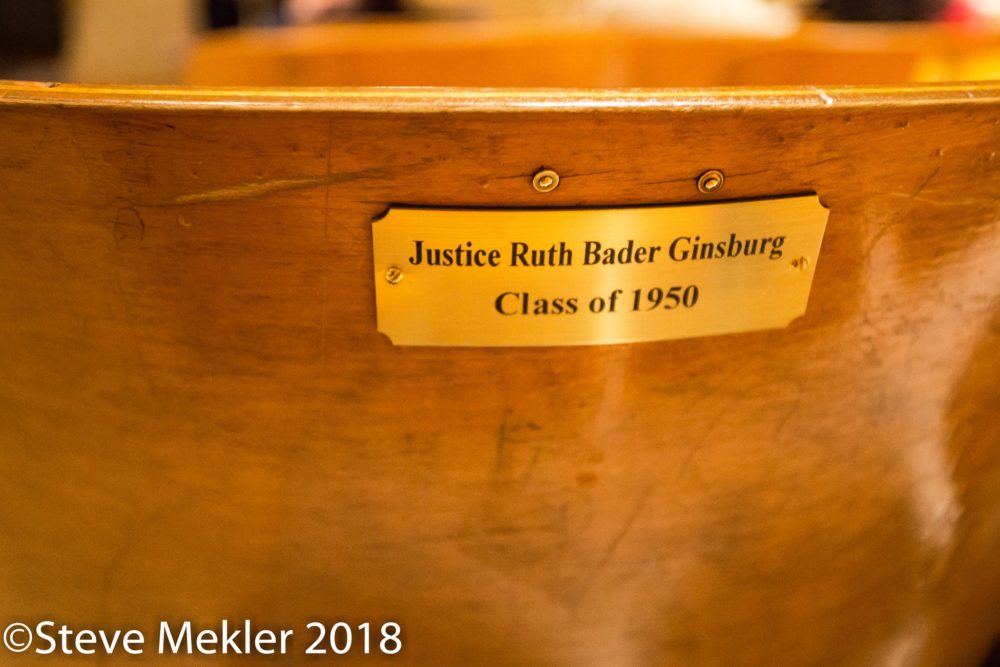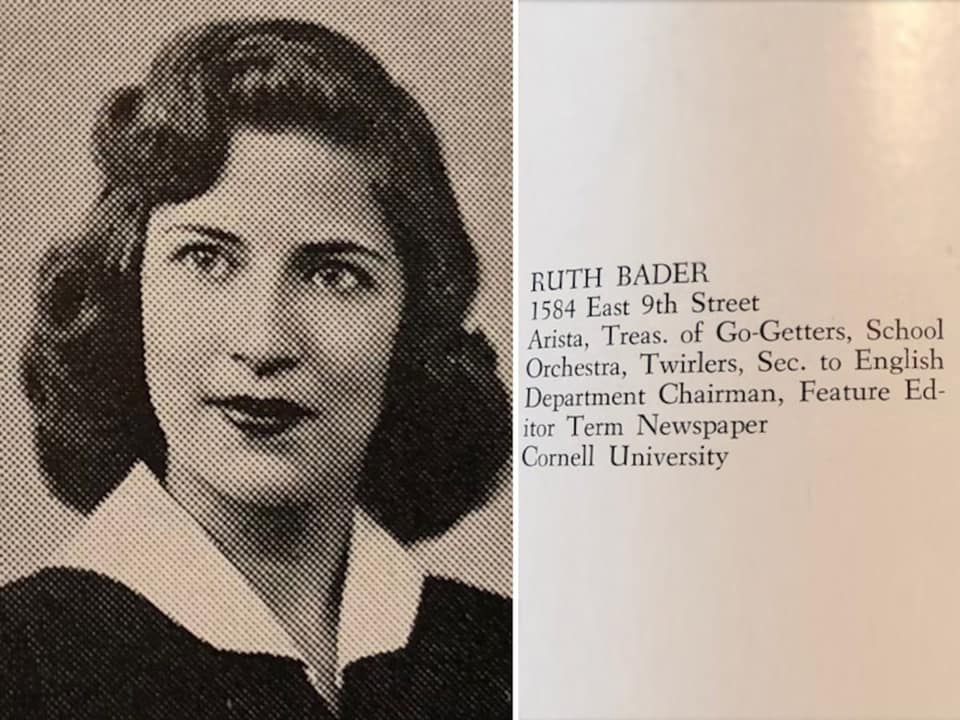
They were both born in 1933, less than two months apart. They both grew up in Brooklyn, New York, no more than one mile away. And they were both in the same graduating class at James Madison High School (1950).
I first learned that Ruth Bader Ginsburg and my mother shared the same alma mater and graduation year only five months ago. Just when I thought I couldn’t learn anything new about my mother’s life in the sixty years I’ve known her, I was shocked, really, that she had omitted this one fascinating detail. But there she was, as my mother pointed to a blurry black and white photo of US Supreme Court Justice Ruth Bader Ginsburg (also nicknamed ‘Kiki’), a member of the graduating class in her high school yearbook.

Since I initially wrote off this discovery as not much more than a novel piece of trivia to share with other family members at future family gatherings, I had barely thought about it since. That is, until Friday, September 18th.
When RBG died that day, and for the next day and the day after that, I read, watched and listened to tribute after tribute gripping the airwaves and social media outlets honoring Ginburg’s legacy. I then began to consider the daunting amount of courage it must have taken to embark on her own career, let alone one in the extremely male-dominated field of law, particularly at that time. It was glaring, in fact, since I viewed my mother as quite the opposite, choosing the much more sheltered, safe and secure role of housewife and mother, even though she longed to be on the stage, as a singer and actress, in addition to having a family.
I found it fascinating comparing the two – now seventy years later – about the choices each of them had made. One taking the traditional and familiar path, while the other the more risky road less travelled.
I therefore spent the last seven days going back seven decades, rummaging through old photos, letters, and newspaper clippings attempting to immerse myself in a time ten years before I was born. What must it have been like to be a teenager in America then, and in Brooklyn in particular, for a seventeen-year-old girl contemplating her future post high school graduation? I felt inspired by RBG’s choice, but disappointed by my mother’s.
I learned that Brooklyn provided the ideal depiction of ‘Americanism’ at that time. A melting pot of recently arrived immigrants, the newsstands reflected that diversity where, in addition to The New York Times and the Daily News, other newspapers were published in a myriad of languages (among them the Italian Il Progresso, the Yiddish Forward, the Irish Echo in Gaelic, and others).
Yet for many, diversity was far more limiting than it was accepting. Public racism was rampant. Laws existed prohibiting interracial marriage, and it wasn’t until just three years earlier, in 1947, that Jackie Robinson became the first African American player in the major leagues.

For women, there were very strict gender roles, which mainly consisted of preparing meals, doing the dishes and laundry and taking care of the children, all while being the ‘ideal wife.’ They were continually cautioned to ‘keep an attractive appearance’ for their husband and keep him happy, to prevent him from leaving. These gender roles became even more prominent following the end of WWII, which ushered in a new age of prosperity, where men would be the sole provider, contributing to their feelings of male superiority. The labor force was comprised of a staggering male to female ratio of 5 to 2, and wives were responsible for their husbands’ professional careers. It’s no wonder that television shows like Father Knows Best, which portrayed rigid gender roles for women and men, were so popular. Essentially, marriage was the main goal for girls, and family life was their major aspiration and the manifestation of a ‘perfect existence.’
For RBG, viewing the imperfections of this existence may be what induced her to envision an alternate future for herself, along with a little help from her mom. “My mother told me to be a lady. And for her, that meant be your own person, be independent,” Ginsburg often recounted. She also anticipated the challenges she would face as a young woman planning to attend law school at that time. “The study of law was unusual for women of my generation,” she once said. “For most girls growing up in the ‘40s, the most important degree was not your BA but your MRS.”
Still, she did not allow any of these challenges stop her. “She understood exactly what kind of change she wanted to make –and be—in the world because she had experienced it so personally,” said Katherine Franke, Columbia Law School professor and Director of the Center for Gender and Sexuality Law, who was a part of a symposium in 2013 in honor of Justice Ginsburg.
Yes, RBG was a radical, in essence, just by being herself.
Believing that “a gender line helps to keep women not on a pedestal, but in a cage,” RBG spoke about the importance of fathers’ involvement in childrearing to lessen the load on mothers: “Women will have achieved true equality when men share with them the responsibility of bringing up the next generation,” she once said
She also made it clear to her male colleagues on the court, when they appeared indifferent about a girl’s strip search by school administrators, that they would have responded differently had they ever been “a 13-year-old girl.” “Every woman of my vintage knows what sexual harassment is, although we didn’t have a name for it,” Ginsburg also said.
Clearly, for women, like my mother, who earned the degree of MRS instead of ESQ, MD or PhD, RBG knew of the importance to speaking, defending and supporting them as well. Unlike I, who viewed them as very different, she did not at all. “One lives not just for oneself but for one’s community,” RGB recently said, when responding to a question about her legacy.
So, just as Kate McKinnon once coined in her hilarious impersonation of RBG on Saturday Night Live by ending with the line, “You’ve been Gins-burned,” I would like to say, in RBG’s honor, “Yes, RBG, I have been Gins-burned, and both I, and my mother, thank you for it!’


